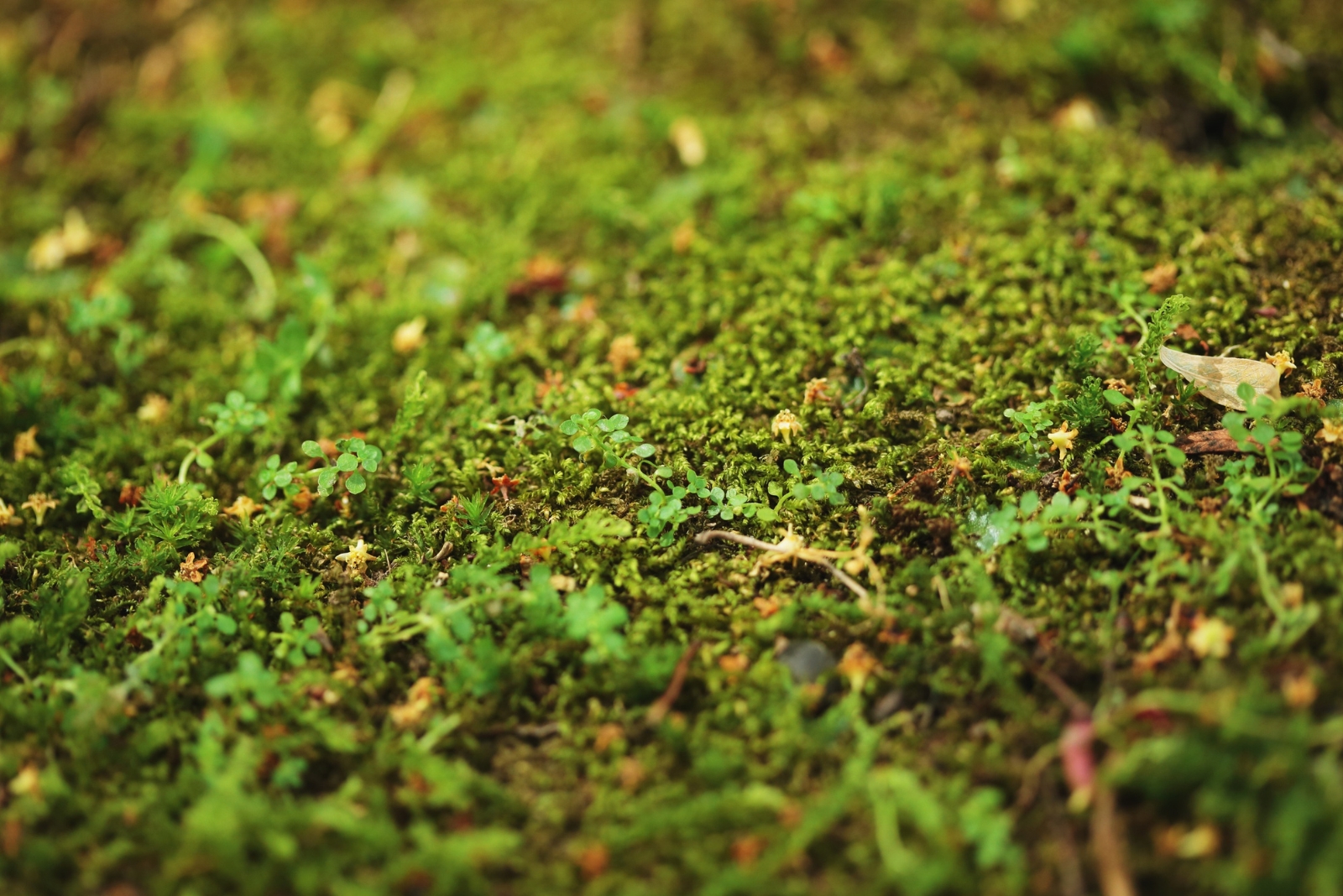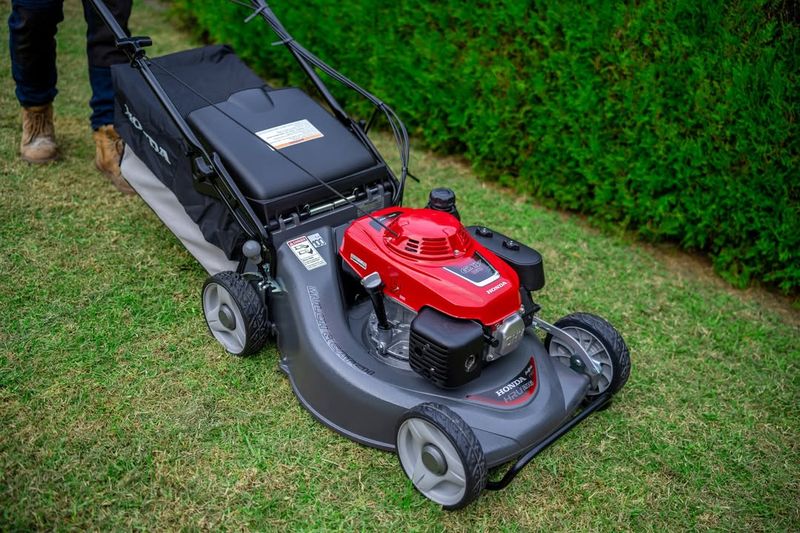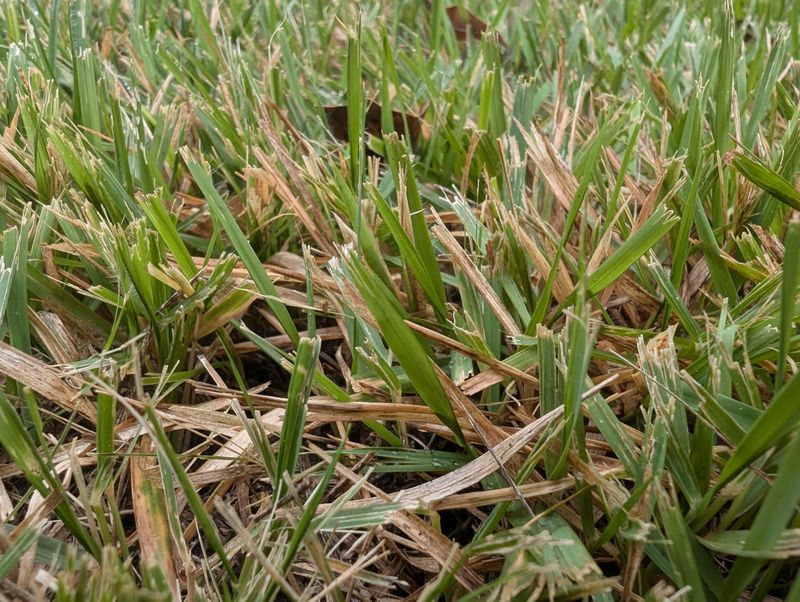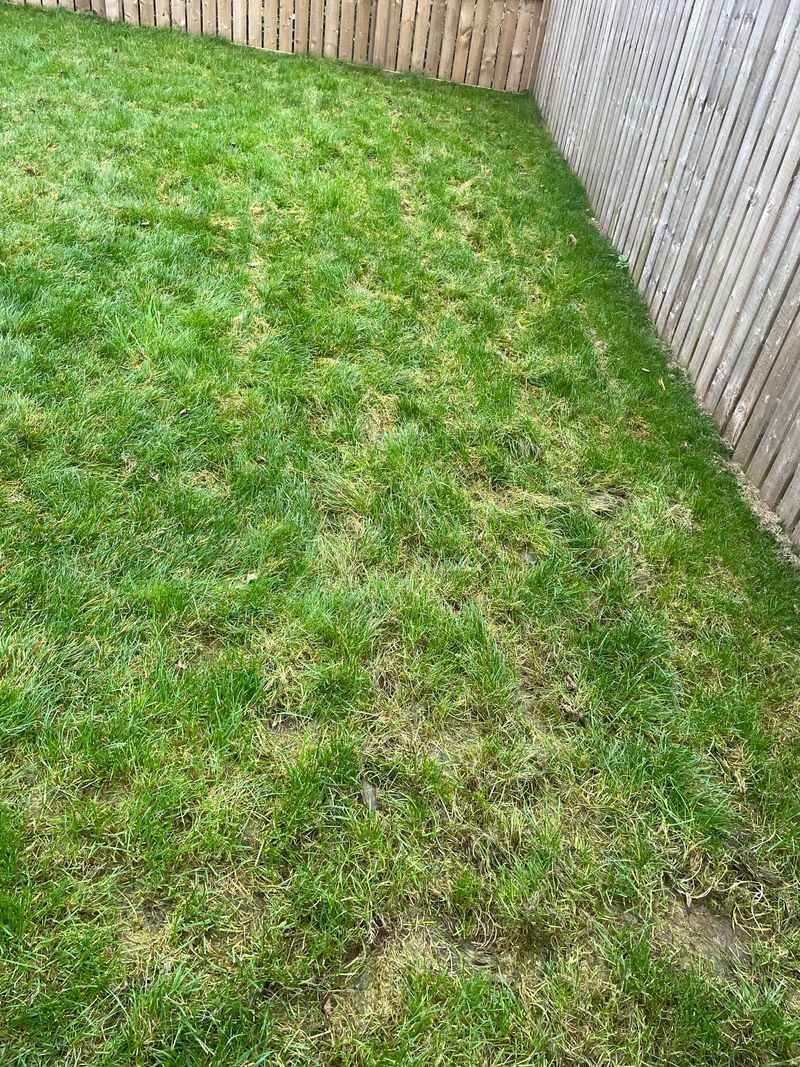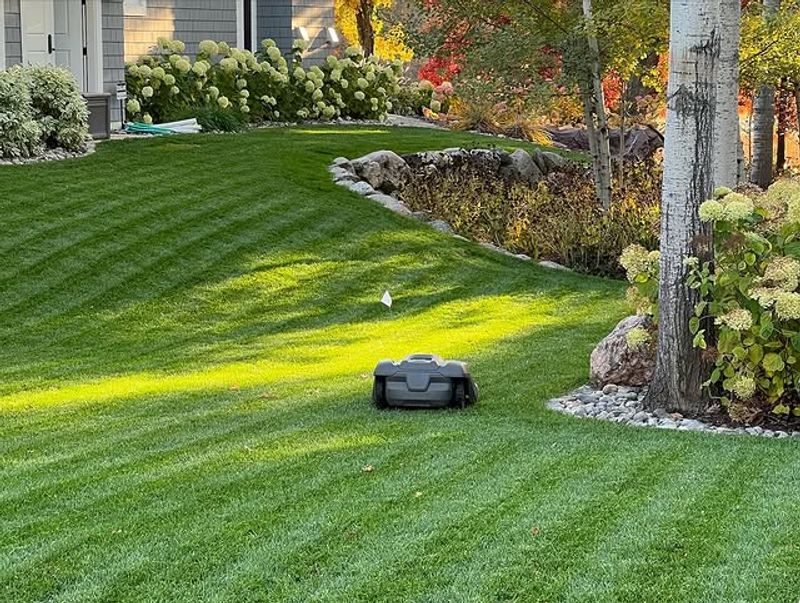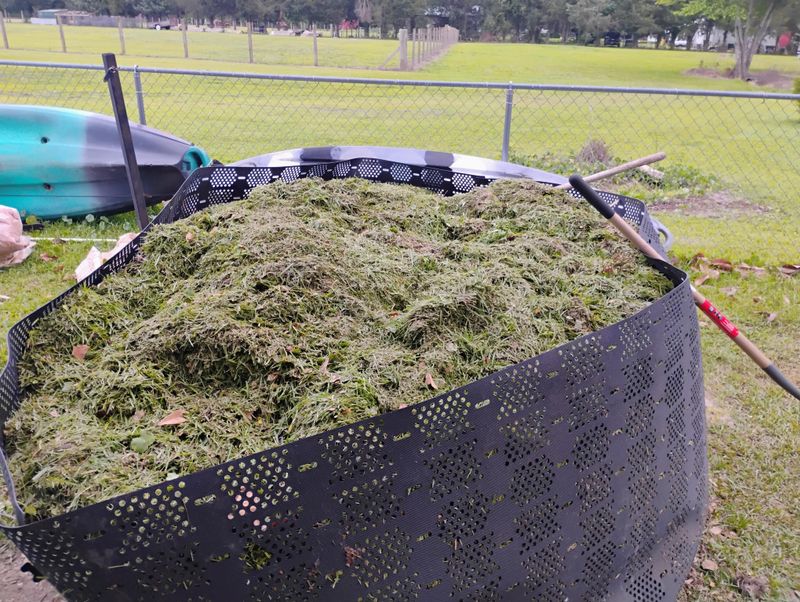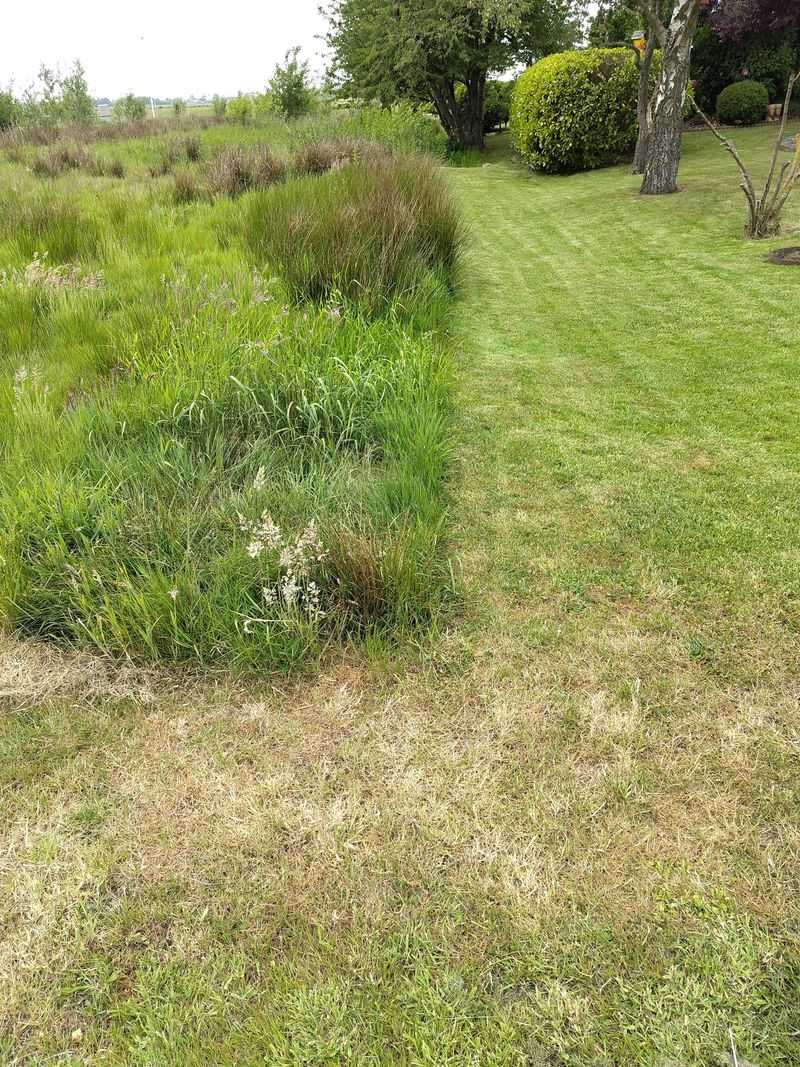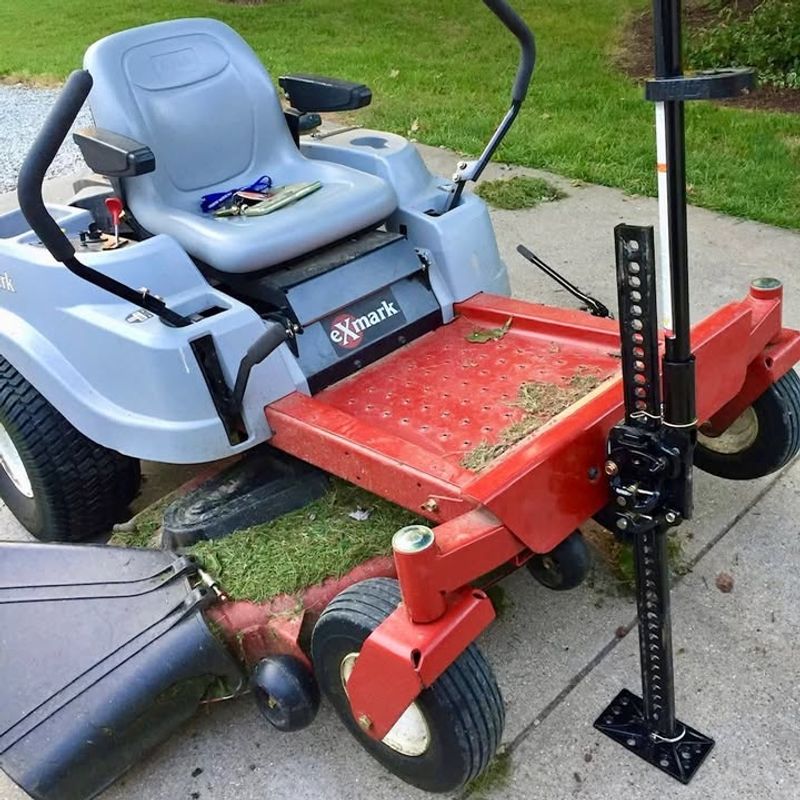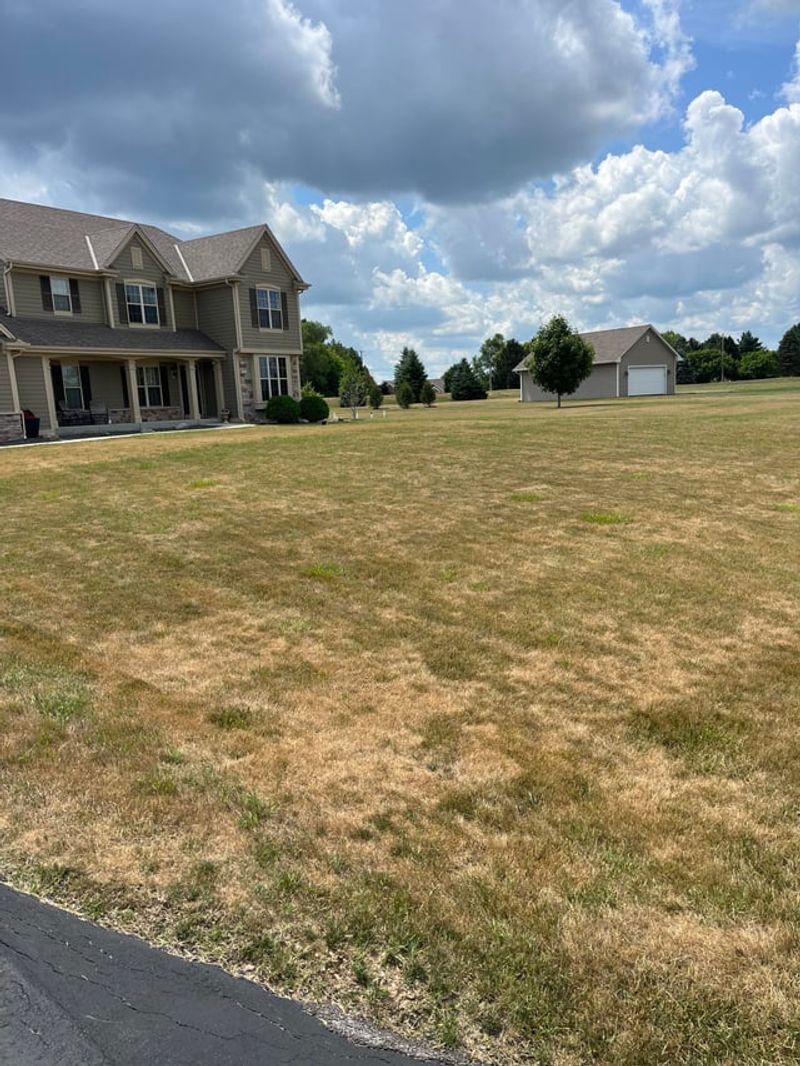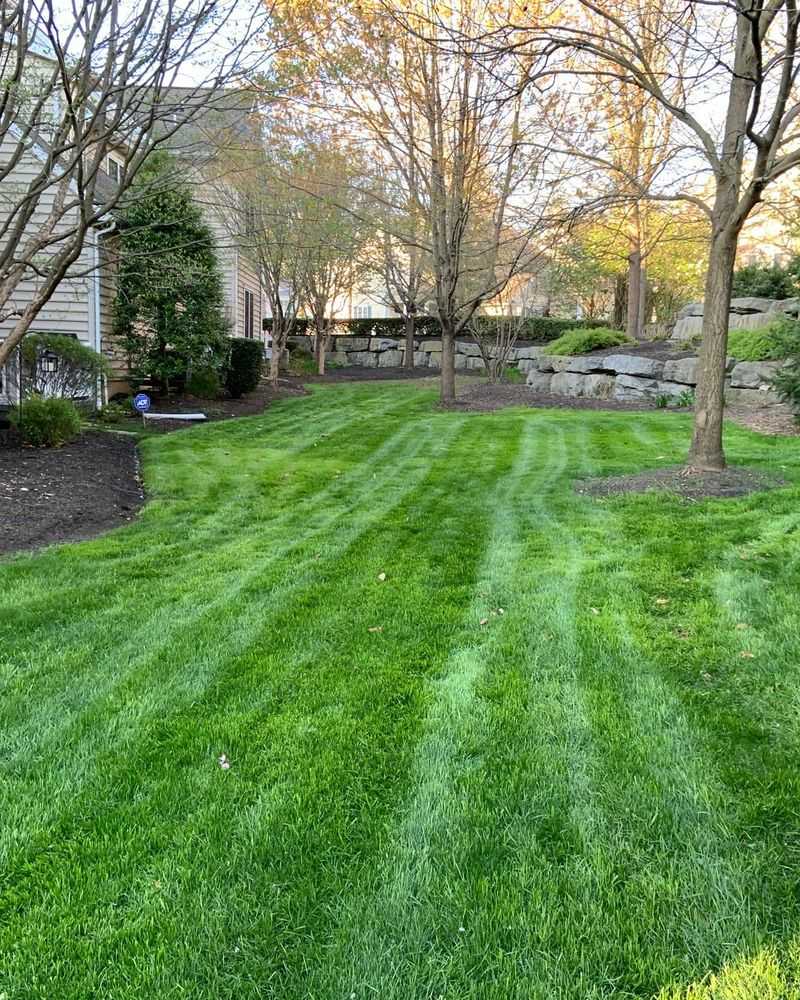Ever wonder why green, fuzzy moss keeps popping up in your Pennsylvania lawn even though you mow regularly? Believe it or not, the way you cut your grass can actually invite moss to move in and take over.
Understanding these common mowing mistakes will help you keep your yard healthy, green, and moss-free all year long.
1. Cutting Grass Too Short
Scalping your Pennsylvania lawn might seem like a time-saver, but it actually weakens grass and lets moss sneak in. When blades are too short, they can’t produce enough energy through photosynthesis, leaving bare patches where moss thrives.
Keep your mower blade set to three inches or higher. Taller grass shades the soil, preventing moss spores from getting the sunlight they need to grow.
Adjust your mower height seasonally and never remove more than one-third of the grass blade at once.
2. Mowing With Dull Blades
Ragged, torn grass tips from dull mower blades create entry points for disease and stress your lawn significantly. Damaged grass turns brown quickly and struggles to recover, opening the door for opportunistic moss growth.
Sharpen your mower blades at least twice per season, or more if you notice frayed grass tips. Clean cuts heal faster and keep grass healthy enough to outcompete moss.
Check blade sharpness by examining grass after mowing—smooth edges mean sharp blades.
3. Mowing Wet Grass
Pennsylvania’s frequent rain makes it tempting to mow damp grass, but this practice compacts soil and clumps clippings unevenly. Compacted soil prevents air and nutrients from reaching grass roots while trapping moisture that moss absolutely loves.
Wait until grass is completely dry before mowing, typically after mid-morning dew evaporates. Dry conditions also give you cleaner cuts and better mulching results.
If you must mow, raise the blade height to minimize soil compaction damage.
4. Following The Same Mowing Pattern
Repeatedly mowing in identical patterns creates ruts and compacts soil along your usual routes. Compacted soil drains poorly, creating perpetually damp conditions where moss establishes colonies and spreads rapidly.
Alternate your mowing direction each time—north-south one week, east-west the next, then diagonal patterns. Varying patterns encourages upright grass growth and prevents soil compression.
Your grass will stand straighter and develop stronger root systems that naturally resist moss invasion.
5. Ignoring Shaded Areas
Shady spots under trees need different care than sunny sections, but many homeowners mow everything identically. Grass in shade grows slower and weaker, making these areas prime real estate for moss colonization.
Raise your mower blade an extra half-inch in shaded zones to give grass more leaf surface for photosynthesis. Consider shade-tolerant grass varieties for these problem areas.
Trim overhanging branches to increase sunlight penetration and improve air circulation around struggling grass.
6. Bagging Clippings Instead Of Mulching
Removing grass clippings robs your lawn of free nitrogen and organic matter that keeps it thick and healthy. Weak, nutrient-starved grass can’t compete with hardy moss that thrives in poor soil conditions.
Switch to mulching mode and leave clippings on the lawn—they decompose quickly and return valuable nutrients. Mulched clippings don’t cause thatch buildup despite common myths.
Your grass will grow denser and more resilient, naturally crowding out moss before it establishes.
7. Mowing Too Frequently
Cutting grass every few days might seem responsible, but it actually stresses plants and depletes their energy reserves. Constantly stressed grass grows thin and weak, unable to form the dense turf needed to keep moss out.
Mow based on grass height rather than calendar dates—only cut when grass reaches four inches tall. During Pennsylvania’s hot summers, grass naturally slows down and needs less frequent cutting.
Patient mowing schedules produce stronger grass with deeper roots and better moss resistance.
8. Neglecting Mower Maintenance
A poorly maintained mower doesn’t just run badly—it actively damages your lawn and creates moss-friendly conditions. Clogged decks, bent blades, and uneven wheels all contribute to irregular cutting that stresses grass unpredictably.
Clean your mower deck after each use and check tire pressure monthly for even cutting height. Change oil and air filters according to manufacturer recommendations.
Well-maintained equipment produces consistently healthy cuts that keep grass vigorous enough to naturally prevent moss establishment.
9. Mowing During Drought Stress
Cutting grass during Pennsylvania’s occasional dry spells adds insult to injury for already struggling lawns. Drought-stressed grass can’t recover quickly from mowing damage, leaving openings where moisture-loving moss paradoxically thrives once rain returns.
Raise your mower blade during dry periods and reduce mowing frequency significantly. Taller grass shades roots and conserves precious soil moisture.
When drought breaks, the strengthened grass will bounce back vigorously and resist moss colonization in previously vulnerable spots.
10. Using Wrong Grass Type For Conditions
Even perfect mowing techniques can’t save grass varieties unsuited to Pennsylvania’s climate or your yard’s specific conditions. Wrong grass types struggle constantly, creating thin coverage that moss quickly exploits and colonizes.
Choose cool-season grasses like tall fescue or fine fescue that thrive in Pennsylvania’s temperature ranges. Match grass varieties to your yard’s sun exposure and soil drainage patterns.
Proper grass selection combined with correct mowing practices creates naturally moss-resistant lawns that stay thick and healthy year-round.

